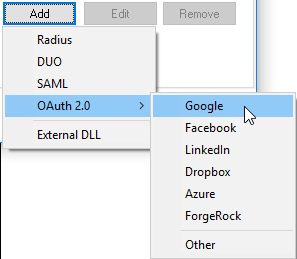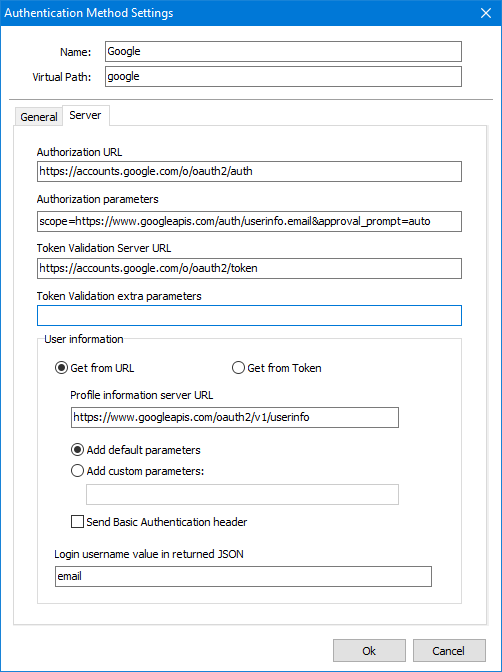When you use OAuth 2.0 as an authentication method, you need to set some parameters.

For predefined methods (Google, Facebook, LinkedIn, Dropbox), the only parameters you will need are the client ID and shared secret

Name |
Choose a name to identify this authentication method. |
Virtual Path |
Type a Virtual Path. If you access your Thinfinity VirtualUI URL followed by the virtual path:
http(s)://ip:port/virtualPath
the application will attempt to log in with this method. If you change this value, remember to change the CSS for SSO options, setting the style for each login button. The ID for each button must match the Virtual path. |
Client ID |
Enter your authentication provider Client ID, generated while configuring your account integration. |
Client Secret |
Your authentication provider's Client Secret generated while configuring your account integration. |
In the 'Server' tab of the Authentication Method Settings, you will find that the fields are completed by default for the predefined methods. Like Google in this case:

When you add an Oauth 2.0 method that is not predefined, you will need to complete these fields.
Authorization URL |
Enter here the URL where your authentication provider can be reached to request authorization. |
Authorization parameters |
Additional parameters for the authorization URL |
Token Validation Server URL |
Enter your authentication provider's token validation server URL. |
Profile Information server URL |
Enter your authentication provider's information server URL. |
Login username value returned in JSON |
The name of the login username field as returned in a JSON from you authentication provider. |